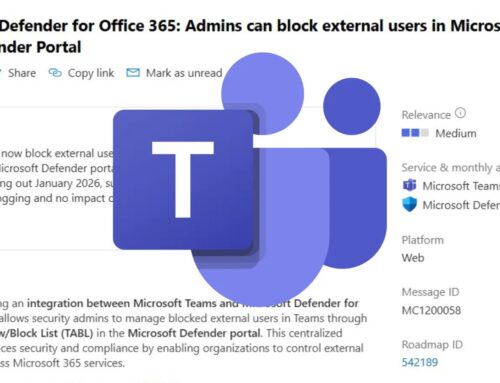
WhatsApp 0-Day Vulnerability Exploited to Hack Mac and iOS Users
In a stark reminder of the persistent and evolving threat landscape, a sophisticated attack campaign has successfully exploited a zero-day vulnerability within WhatsApp, specifically targeting macOS and iOS users. Confirmed by WhatsApp itself, this breach highlights the critical importance of timely patching and vigilance in an environment where even widely trusted applications can become vectors for highly targeted attacks.
The Genesis of the Attack: A Double-Barreled Threat
The core of this advanced persistent threat (APT) lay in a previously unknown vulnerability within the WhatsApp application running on Apple devices. Identified as CVE-2025-55177, this WhatsApp zero-day was not sufficient on its own to achieve full compromise. Instead, threat actors ingeniously combined it with an unspecified, separate vulnerability within Apple’s operating systems. This dual-vulnerability approach allowed attackers to bypass security measures, gain unauthorized access to devices, and subsequently exfiltrate user data.
The exploitation of CVE-2025-55177 in conjunction with an Apple OS flaw underscores a critical trend in high-impact cyberattacks: the chaining of vulnerabilities. This technique leverages multiple weaknesses across different software layers to achieve a more profound level of compromise than would be possible with a single flaw.
Who Was Targeted and Why?
While the initial report does not specify the exact nature of the targeted users, the sophistication of a zero-day exploit campaign typically suggests a highly focused and well-resourced attacker. Such campaigns are often directed at:
- Journalists
- Human rights activists
- Political dissidents
- High-profile individuals
- Government officials
- Corporate executives
The motivation behind these attacks is generally espionage, intellectual property theft, or political destabilization, rather than broad, indiscriminate compromise.
Technical Overview: How the Attack Unfolded (Hypothetical Scenario)
While specific technical details of the exploitation chain for CVE-2025-55177 remain under wraps, a typical zero-day exploit of this nature might involve:
- Initial Foothold: An attacker sends a specially crafted message or file via WhatsApp that triggers the CVE-2025-55177 vulnerability. This could be a buffer overflow, an integer overflow, or a deserialization flaw, leading to arbitrary code execution within the WhatsApp process.
- Privilege Escalation/Sandbox Escape: The code executed within WhatsApp, though restricted by the application’s sandbox, then exploits the second vulnerability in the Apple operating system. This could be a kernel vulnerability or a flaw in system services, allowing the attacker to escape the WhatsApp sandbox and achieve higher privileges on the device.
- Data Exfiltration and Persistence: Once elevated privileges are obtained, the attacker can install persistent malware, access sensitive data (messages, contacts, photos, microphone, camera), and exfiltrate it to attacker-controlled servers.
Remediation Actions and Proactive Security
WhatsApp has confirmed that the vulnerability has been patched. This underlines the immediate and critical importance of patching. For users and organizations, the following actions are paramount:
Immediate Steps:
- Update WhatsApp Immediately: Ensure your WhatsApp application on both iOS and macOS is updated to the latest available version. Check your app store for pending updates.
- Update iOS/macOS: Apply all operating system updates for your Apple devices. While the specific Apple OS vulnerability is not detailed, staying current with OS patches is a fundamental security practice.
- Reboot Devices: A device reboot can sometimes clear transient malware or memory-resident exploits.
Ongoing Proactive Measures:
- Enable Automatic Updates: Configure your devices to automatically download and install software updates for both applications and operating systems.
- Practice Caution with Unsolicited Content: Be wary of messages, links, or files from unknown senders, or even unexpected content from known contacts, especially if it seems suspicious or out of character.
- Regular Backups: Maintain regular, encrypted backups of your critical data. This helps in recovery scenarios following a potential compromise.
- Endpoint Detection and Response (EDR)/Mobile Threat Defense (MTD): For organizations, deploy robust EDR solutions on macOS and MTD solutions on iOS. These tools can help detect suspicious activity, even from zero-day exploits, by monitoring system behavior.
- Zero-Trust Principles: Adopt a zero-trust security model. Verify every access request, assume breach, and segment networks to limit lateral movement if a compromise occurs.
Relevant Security Tools
While specific tools for detecting this historical exploit are less relevant now that it’s patched, understanding general categories of tools for mobile and macOS security is crucial.
| Tool Category | Purpose | Examples / Link (General) |
|---|---|---|
| Mobile Threat Defense (MTD) | On-device protection for iOS/Android; detects sophisticated threats, zero-days, and phishing attempts. |
|
| Endpoint Detection & Response (EDR) | Advanced threat detection, investigation, and response for macOS endpoints. |
|
| Vulnerability Management Platforms | Identifies software vulnerabilities (including OS and application-level) across an organization’s assets. |
|
| Network Intrusion Detection/Prevention Systems (IDS/IPS) | Monitors network traffic for suspicious activity and known attack patterns. |
|
Key Takeaways for a Resilient Security Posture
The WhatsApp zero-day incident serves as a powerful reminder that no software, however widely used or trusted, is immune to sophisticated attacks. The combination of a WhatsApp vulnerability (CVE-2025-55177) with an Apple OS flaw emphasizes the threat actors’ adeptness at chaining vulnerabilities for maximum impact. For users and organizations, continuous vigilance, prompt application of security updates, and the implementation of multi-layered security defenses are not just recommendations, but essential practices for maintaining digital safety in an ever-evolving threat landscape.





